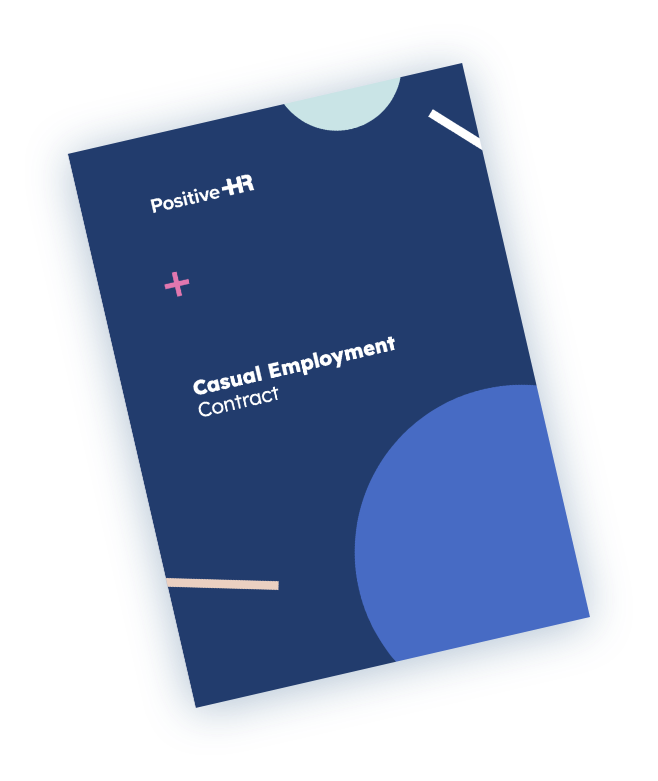I needed HR support in Australia quickly and Positive HR were a great help. I would recommend them to other businesses



Are you looking to grow your business by expanding your team? Perhaps you want to know what the best practice is when bringing people on? Maybe you want to take your business a step further, so you can be considered an employer of choice. Wherever you stand with recruitment, Positive HR can help.
A great workplace leads to increased productivity, better business results, and happier, more engaged employees. Success doesn’t just happen. Our team have years of experience turning a good workplace into a great one.
Have a solid business plan but it all falls apart when one team member is sick? Constantly receiving negative comments from internal and external stakeholders when things don’t go to plan? Struggling to scale up and grow your business? Process mapping helps ensure you and your team know what to do and when to do it.
Leaders matter, leadership matters more. Help your employees reach their full potential through a collaborative approach to leadership and team development.
Keeping you & your team safe & supported. Positive HR will provide you with all the safety steps that you need to protect you and your workers from workplace hazards.
Have you received a formal complaint from an employee? Experiencing conflict in the workplace or perhaps certain employees repeatedly causing issues? Before you throw a Gordan Ramsay and yell “You’re fired!”, Positive HR can investigate, mediate, and, if it comes down to it, terminate employees while remaining fair, just, and keeping you legally covered.
We’ve got your back. There is no “one size fits all” approach when you work with Positive HR. We take the time to understand your industry and the elements that make it unique, not just from a compliance point of view, but also looking at the best approaches to drive success within your company.
Constantly receiving negative comments from internal and external stakeholders when things don’t go to plan? Struggling to scale up and grow your business? Process mapping helps ensure you and your team know what to do and when to do it.


The first stage is looking at process mapping from a high, overarching view. This step involves bringing employees together to ensure everyone understands the meaning of ‘workflow process’, reviewing where most needs processes documented or implemented, and reviewing any processes already in place.
We then jump to the nitty gritty. This involves working with staff members to deep dive into overall workflow processes to identify sub-processes including;
a) Activities – Tasks executed during process across various divisions.
b) Events – Triggers that cause a process to begin, end, or may even redirect the overall workflow process to a different path.
c) Gateways – Decision steps.
d) Flows – identify parallel processes and connect activities across divisions.
The final step involves staff and management identifying and observing any remaining detail to review and discuss to ensure the new overall workflow process and sub-processes are mutually understood. From here, provide education to teams and individuals to ensure they are complying with workflow process, then review the systems to ensure they align.


Imagine bringing in a new team member, and being able to show them a clear process for doing their role, or an overall process of what the company does. Having these processes documented means less repeat questions, and quicker learning from new employees who can consult a process document when they are unsure of the next step.
If one team member is the only one that knows how to do a certain task, or what their role entails, everyone else is at a loss when that team member falls ill, takes leave, or leaves the business. Ensuring processes are documented and information is shared ensures that these knowledge gaps are covered if a team member is not around.
When employees have clear processes and know where to find information, they are more effective and productive. When relying on memory or other people to find the next step, time is often wasted waiting for someone to be available to ask, or trying to rely on memory for a task.
Without a solid plan or process, some steps and details can be missed or overlooked. If your employees are relying on memory or other team members to complete a task, human error will always play a part. Having a clear, written process, means that on those days when the brain is feeling a bit fuzzy, employees always have somewhere to look for that next step.
When your processes are clear, and everyone knows the standard that is expected, it doesn’t matter if there are 2, 15, or 300 employees on the team. With clear processes, you can scale your business much easier, allowing you to step away and your employees to take the lead, knowing exactly what to do and what is expected of them.
Imagine bringing in a new team member, and being able to show them a clear process for doing their role, or an overall process of what the company does. Having these processes documented means less repeat questions, and quicker learning from new employees who can consult a process document when they are unsure of the next step.
If one team member is the only one that knows how to do a certain task, or what their role entails, everyone else is at a loss when that team member falls ill, takes leave, or leaves the business. Ensuring processes are documented and information is shared ensures that these knowledge gaps are covered if a team member is not around.
When employees have clear processes and know where to find information, they are more effective and productive. When relying on memory or other people to find the next step, time is often wasted waiting for someone to be available to ask, or trying to rely on memory for a task.
Without a solid plan or process, some steps and details can be missed or overlooked. If your employees are relying on memory or other team members to complete a task, human error will always play a part. Having a clear, written process, means that on those days when the brain is feeling a bit fuzzy, employees always have somewhere to look for that next step.
When your processes are clear, and everyone knows the standard that is expected, it doesn’t matter if there are 2, 15, or 300 employees on the team. With clear processes, you can scale your business much easier, allowing you to step away and your employees to take the lead, knowing exactly what to do and what is expected of them.

Due to the inconsistencies, some clients have had such a negative experience through the client journey process the business has now received some 1 star reviews on Google.
Bridgett knows that if she manages the client journey herself, clients are always delighted with the service.
She started working with Positive HR and our talented HR superstars, who helped Bridget identify her current client journey, what was working, what wasn’t, and how it could be innovated and improved. Part of this was also reviewing automation, tech and the systems used.
Since working with Positive HR, Bridget has been able to greatly improve the experience for her clients and ensure consistency across the team.


Let’s build a project tailored to suit your organisation’s needs, that is flexible and cost-effective.

Dedicated HR support for a 1/2 day per week, to ensure your team and workplace are HR-ready.

One out of five ain’t bad. Get a full day of HR services per week with our most popular package.


The way Jess shows up fully present in the moment to what you need is rare, especially for someone so in-demand and busy. Jess's knowledge, experience and the sense of purpose she brings to her work shines through. Getting stuff done whilst being a wonderful human at the same time. It's been a pleasure and I look forward to continuing to work with Positive HR in the future.








We acknowledge Aboriginal and Torres Strait Islanders are Australia’s First Peoples and the traditional owners and custodians of the land on which we live and work.
Positive HR is committed to safe and inclusive work places, policies and services of LGBTIQ+ communities and their families.
TERMS OF SERVICE | WEBSITE TERMS | PRIVACY POLICY | © COPYRIGHT 2025 | ALL RIGHTS RESERVED
This site is protected by reCAPTCHA and the Google Privacy Policy and Terms of Service apply